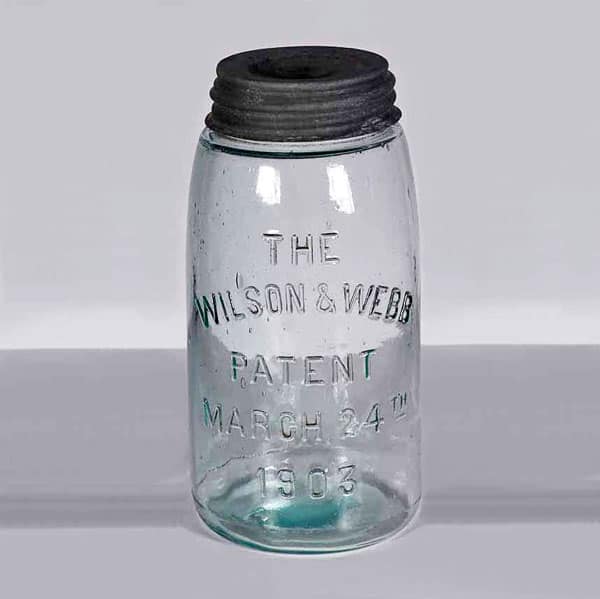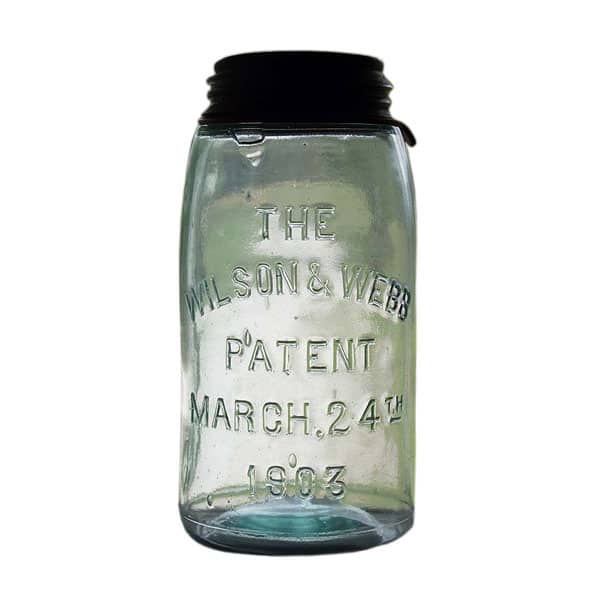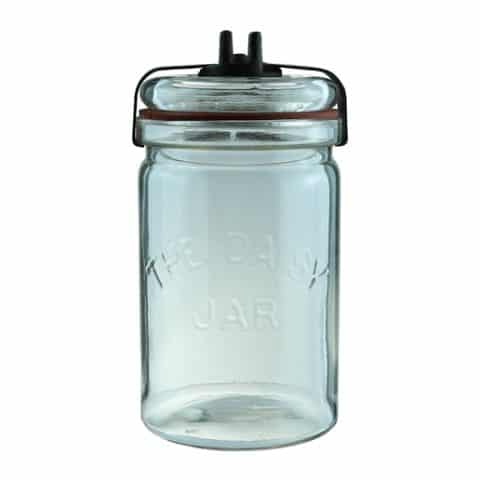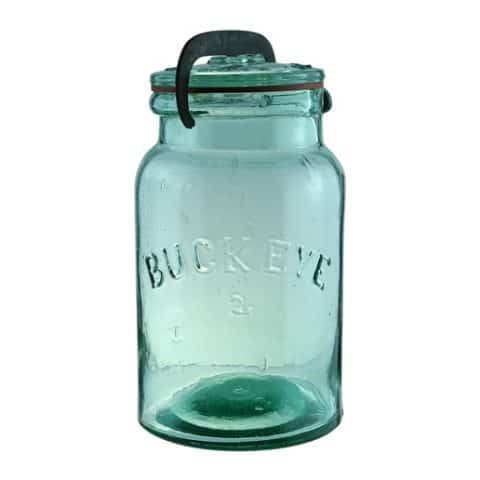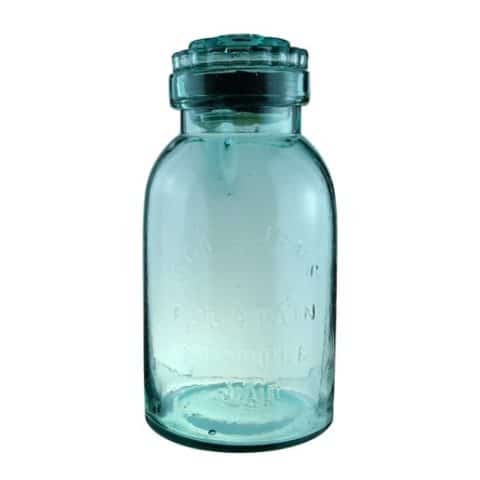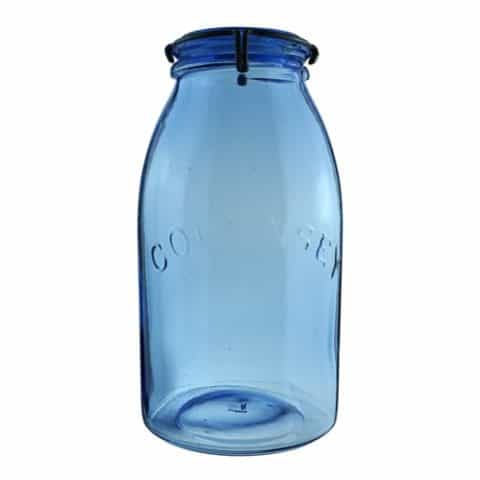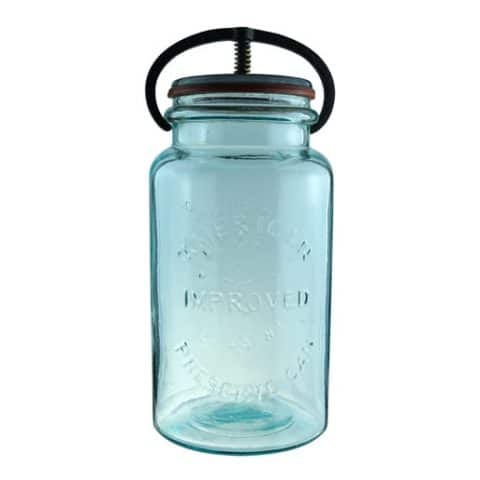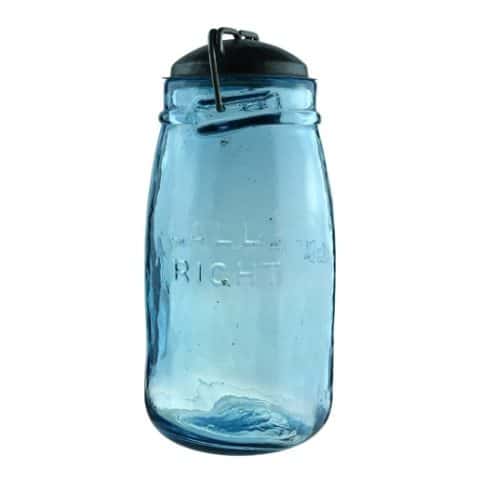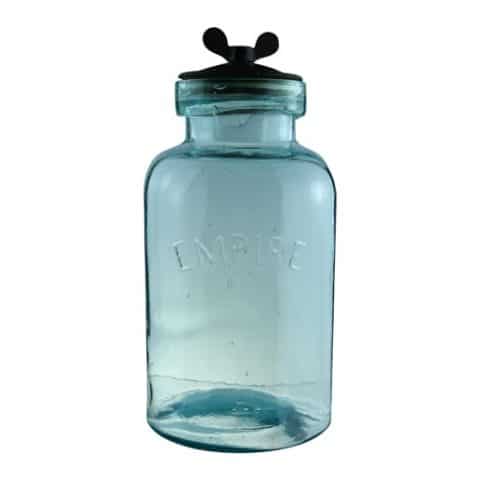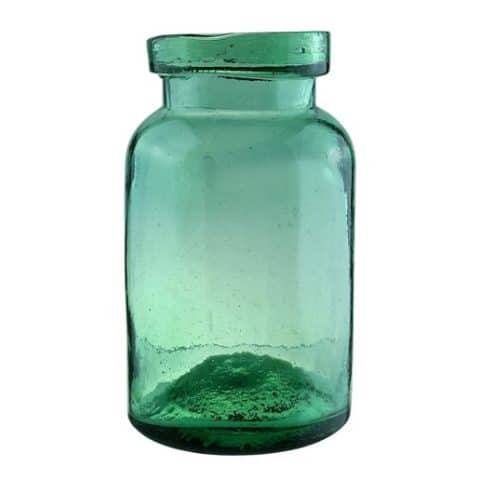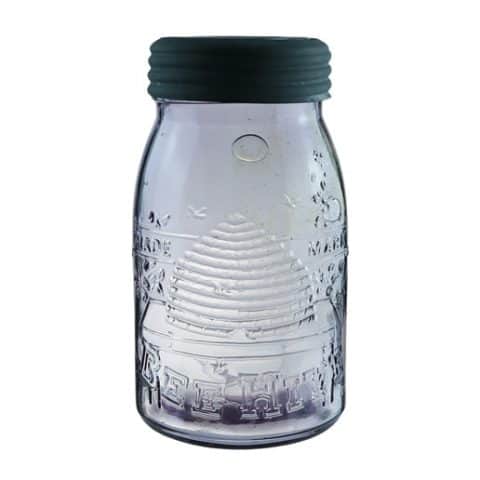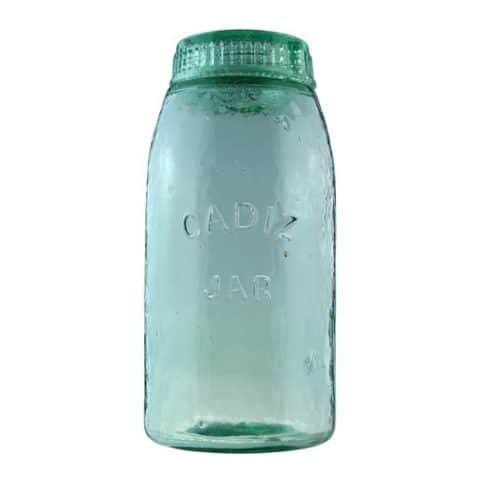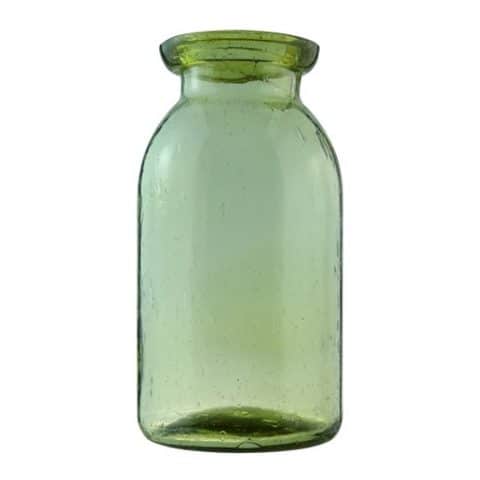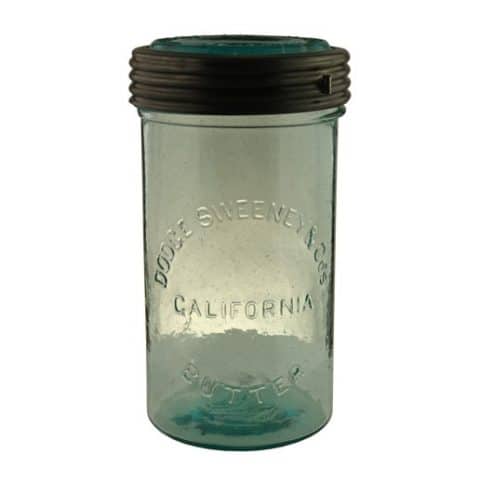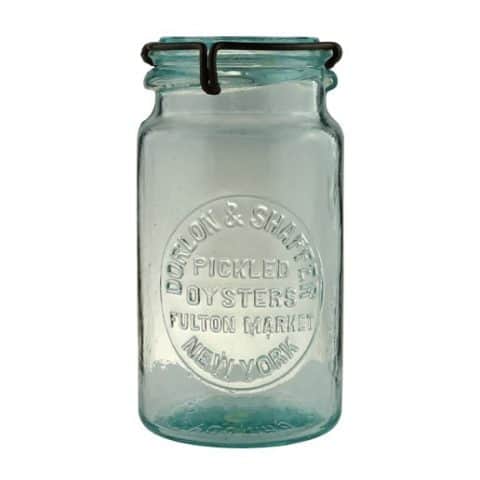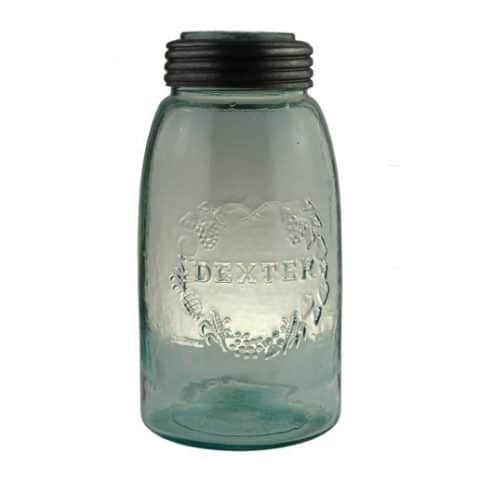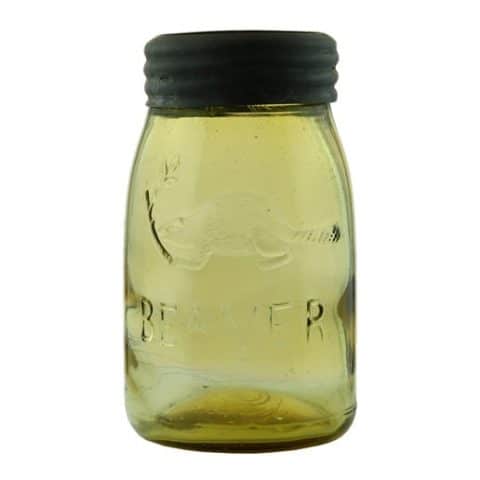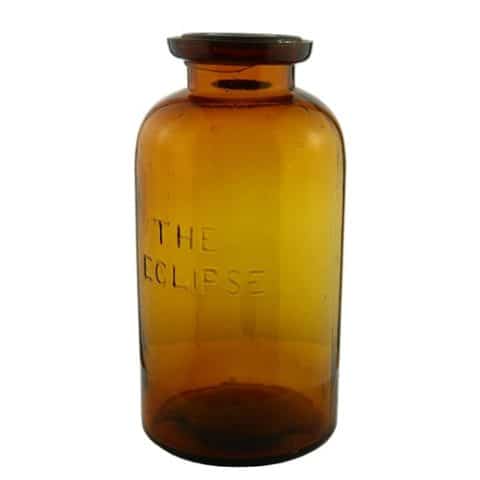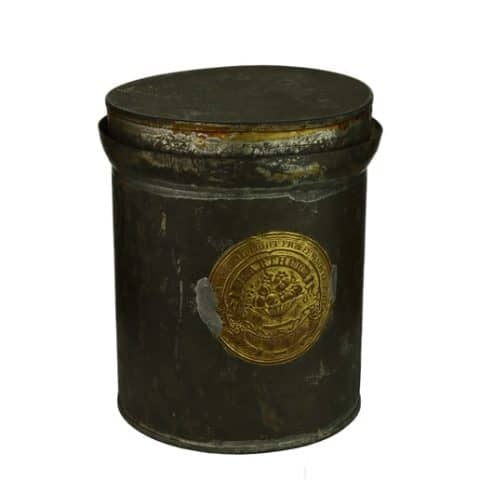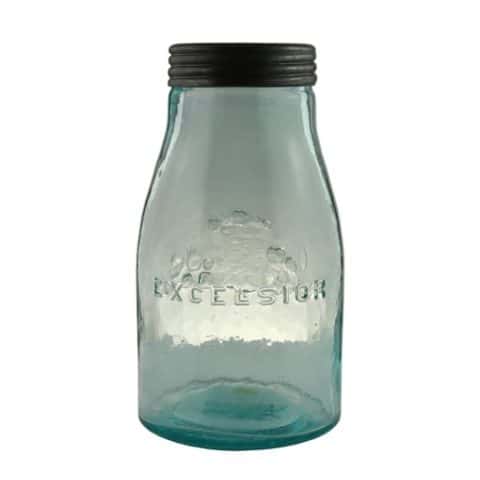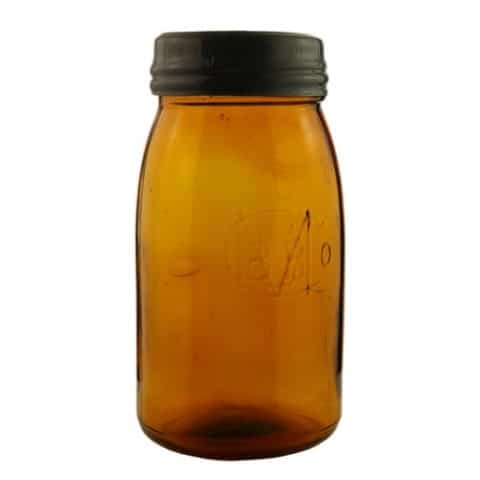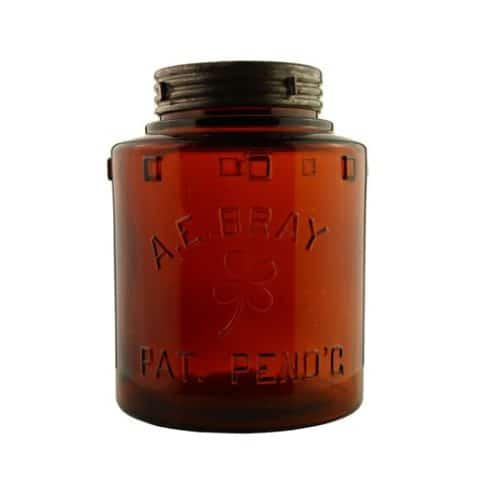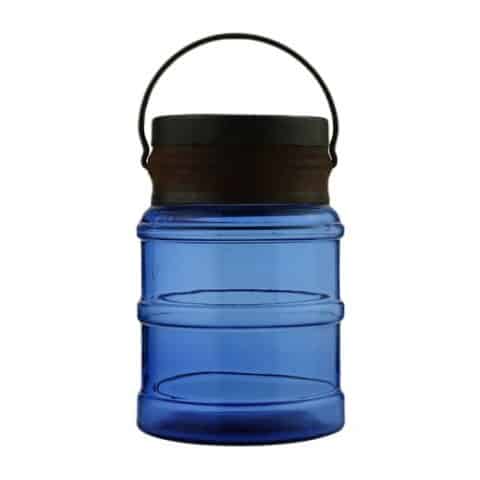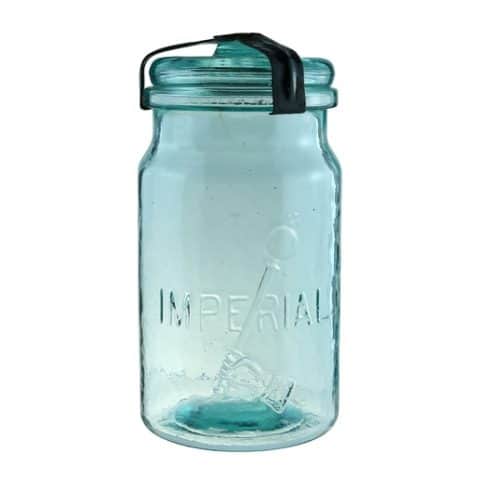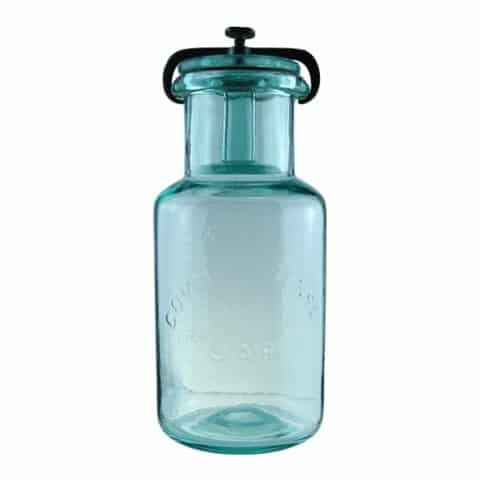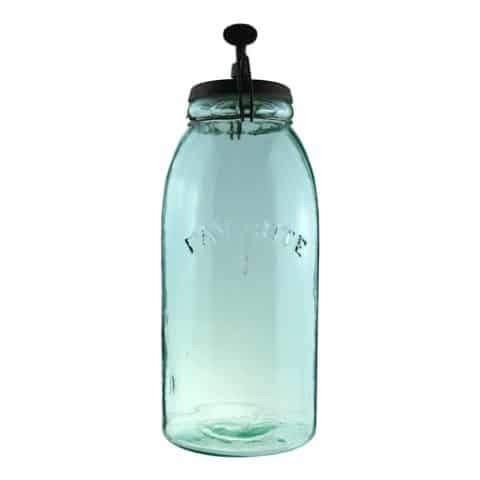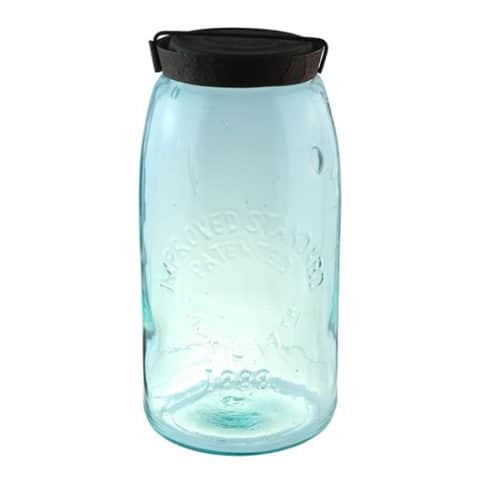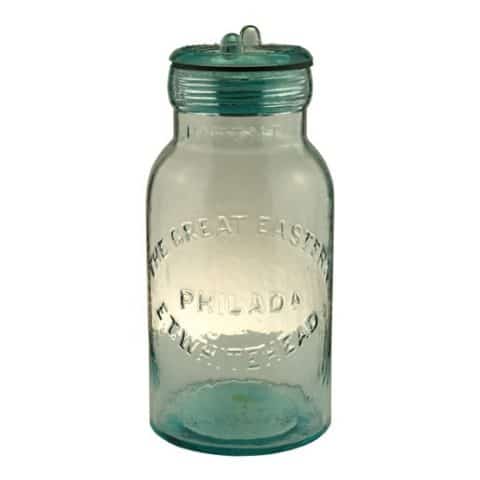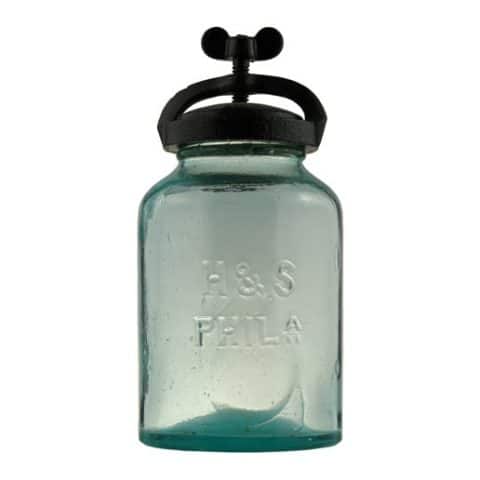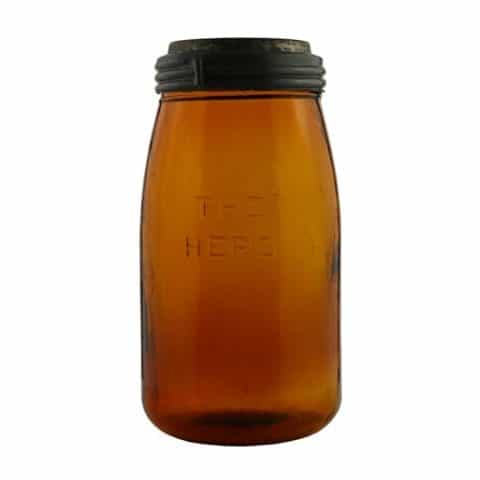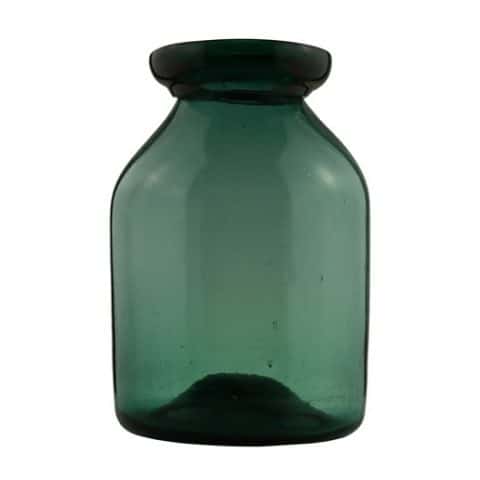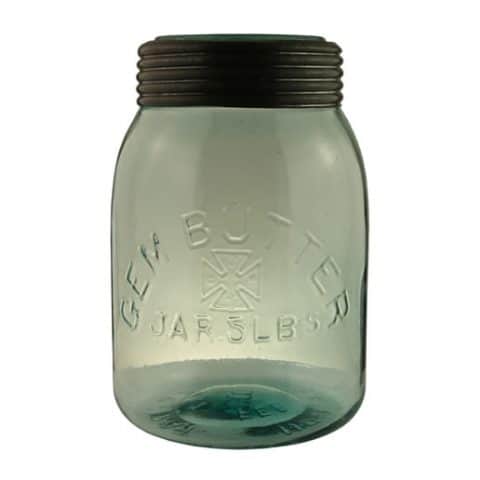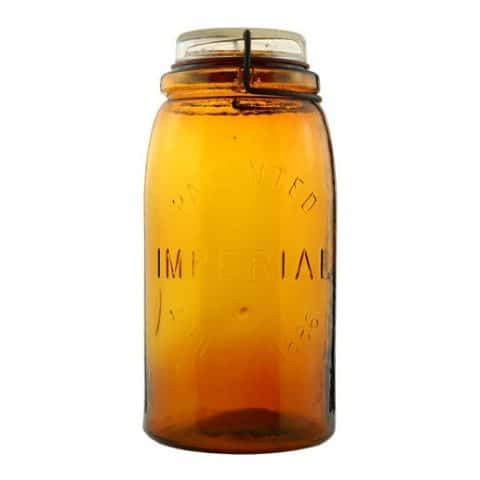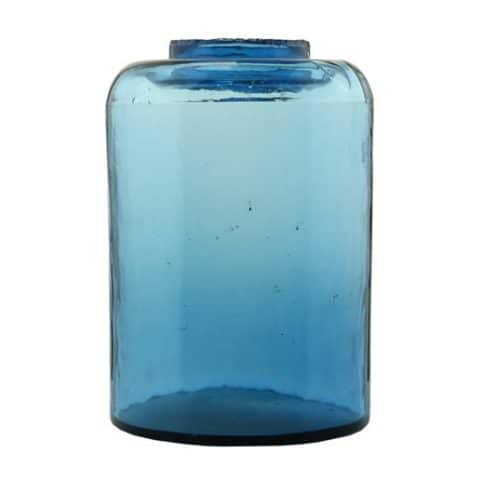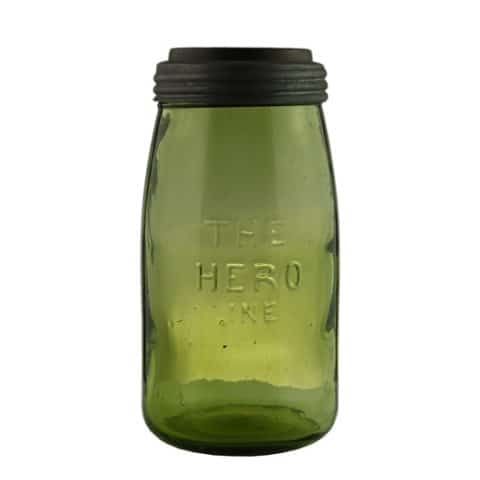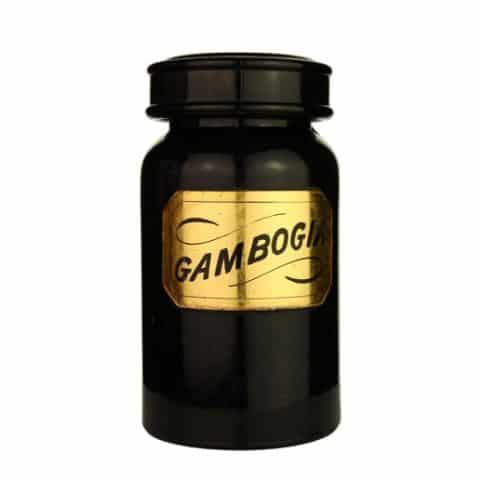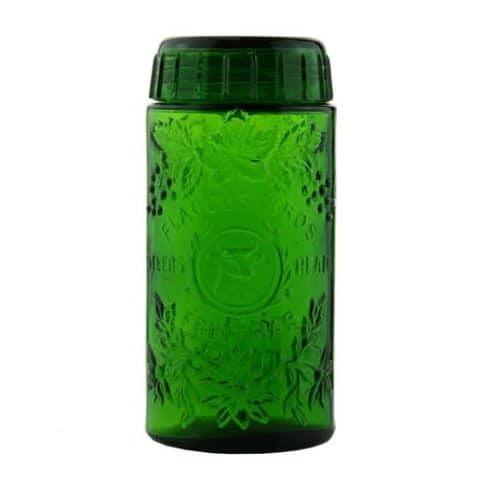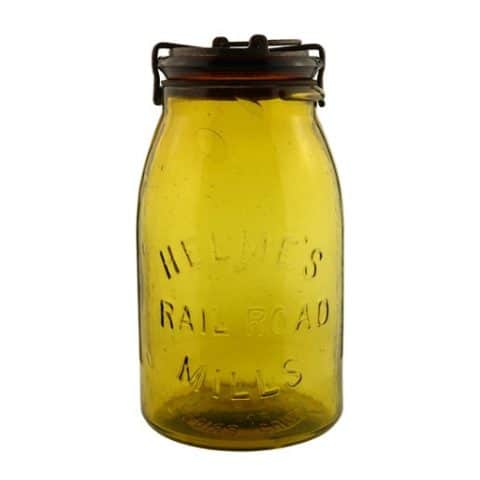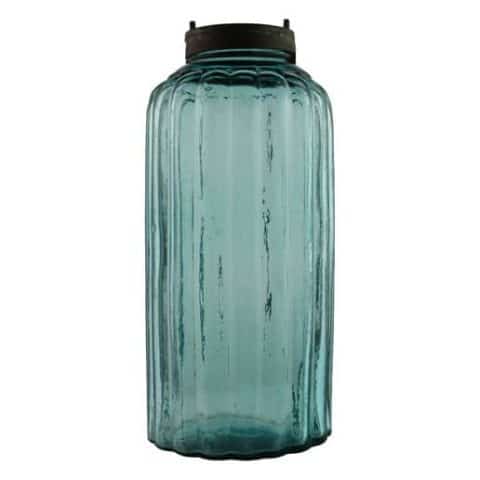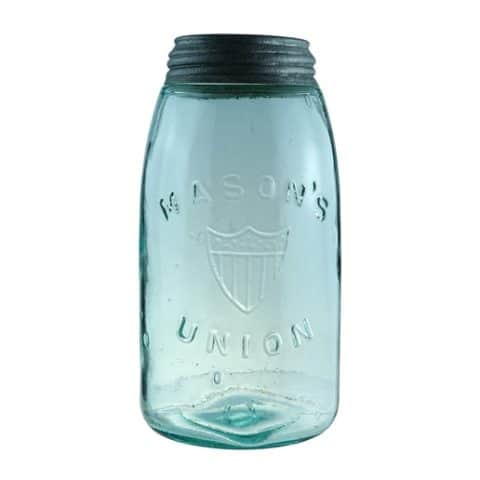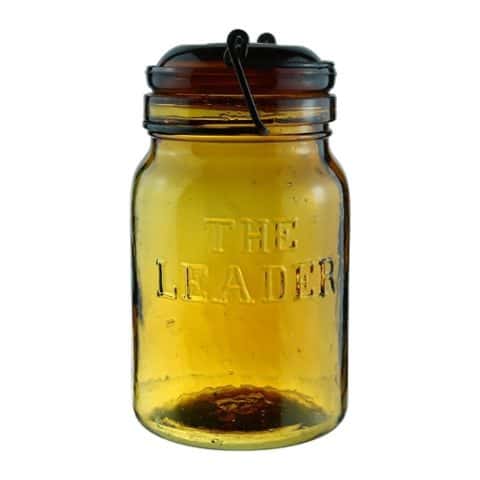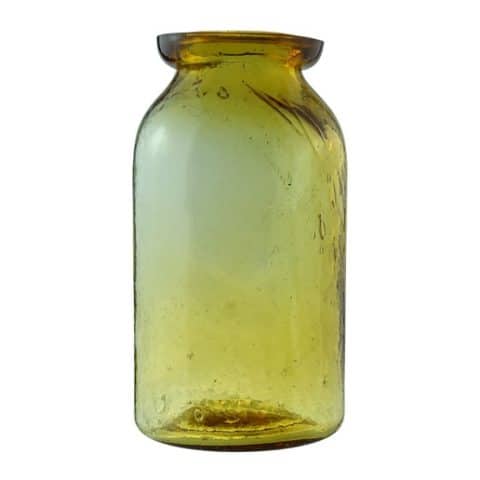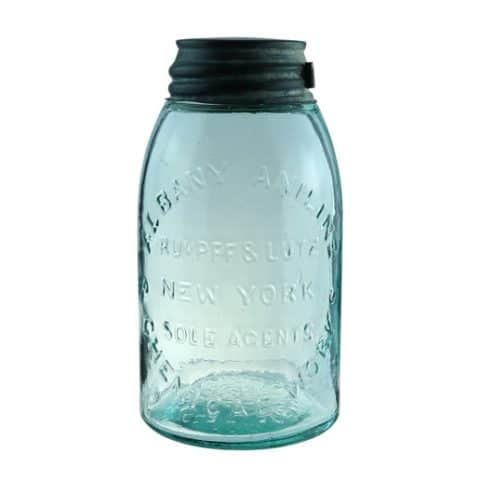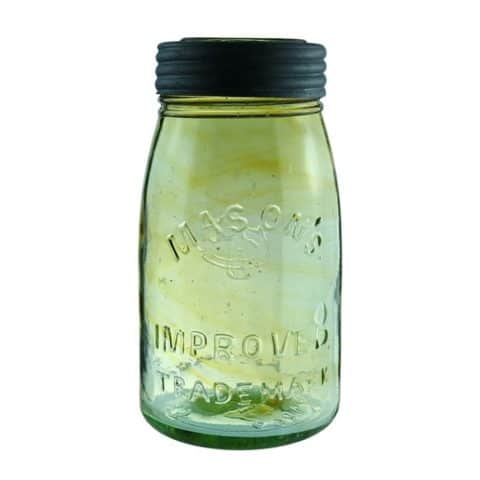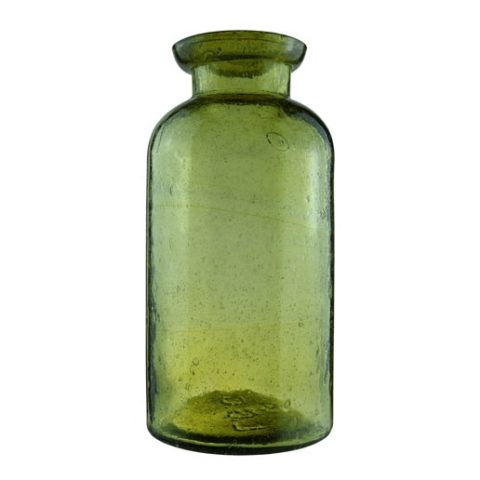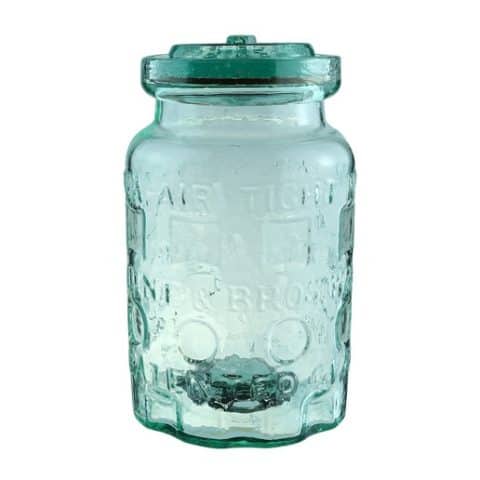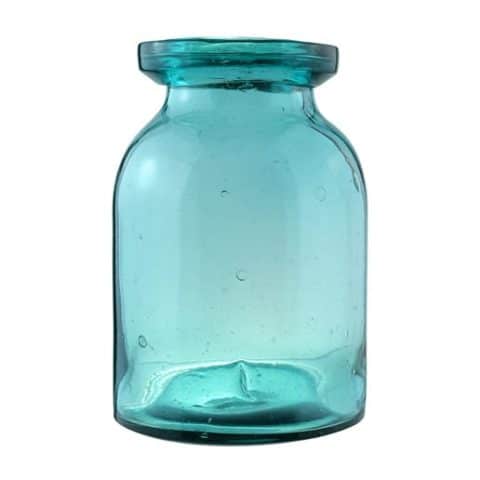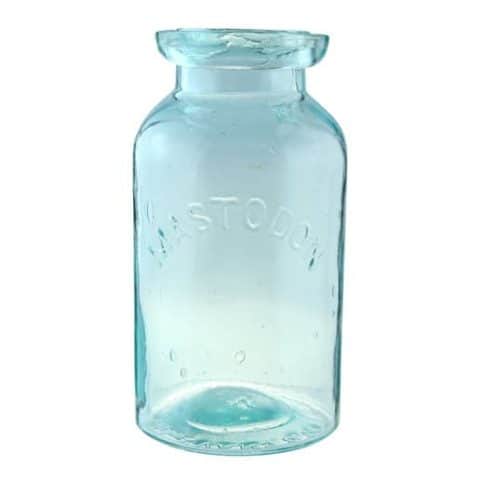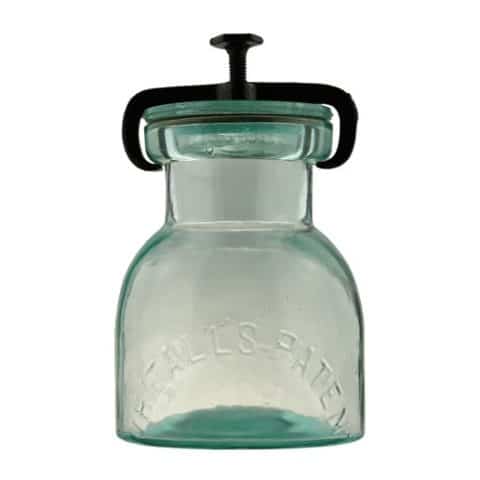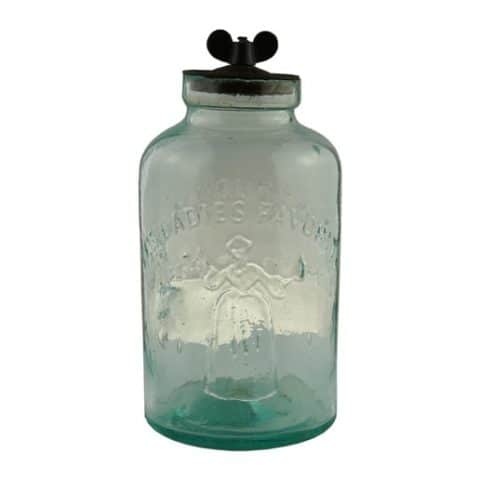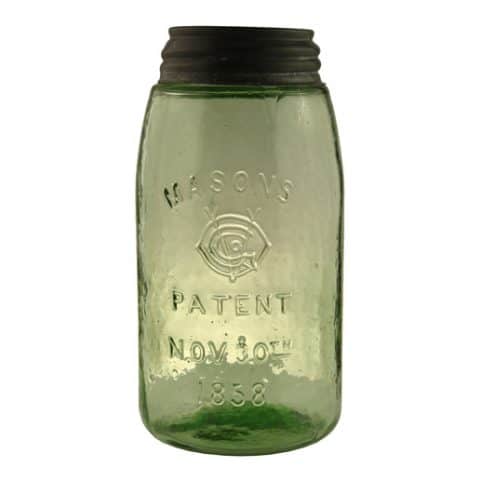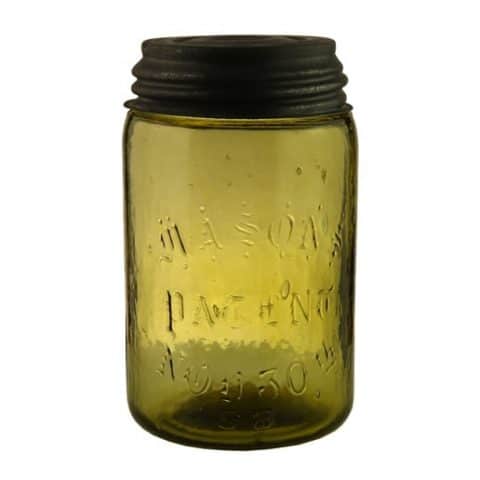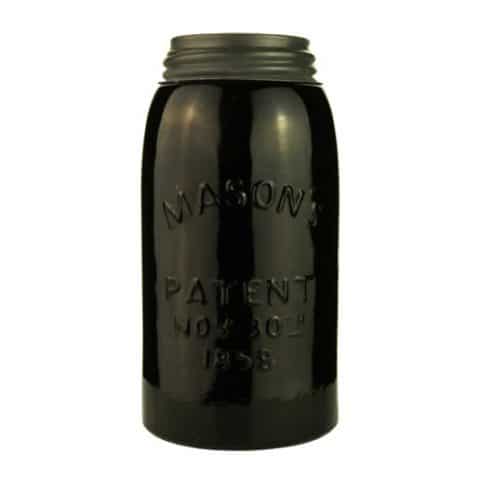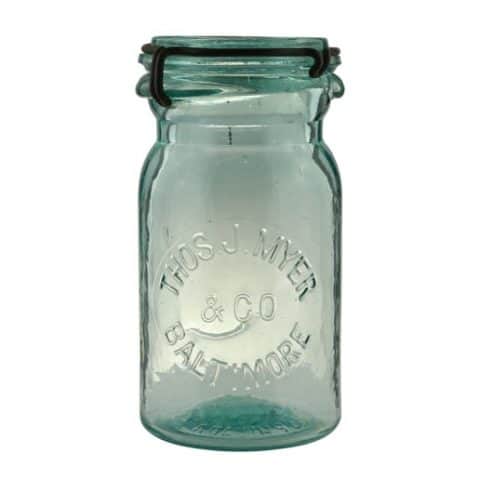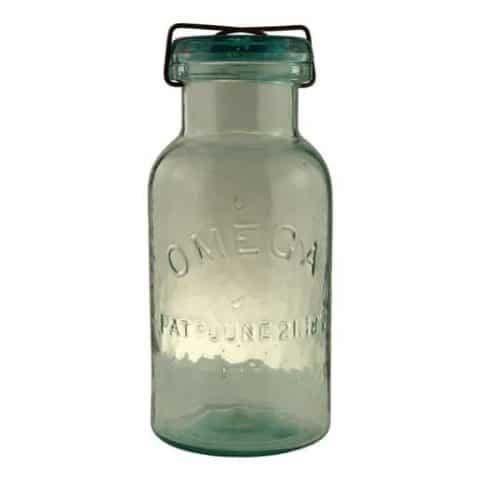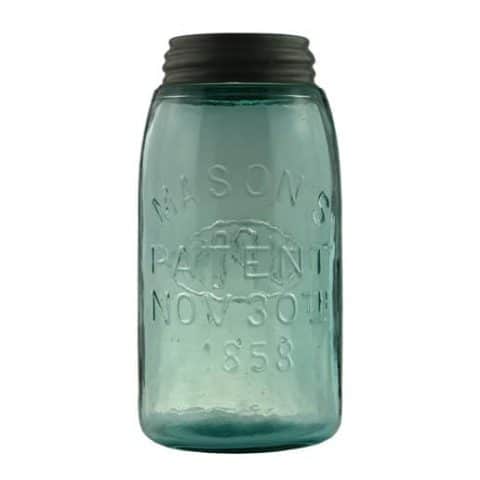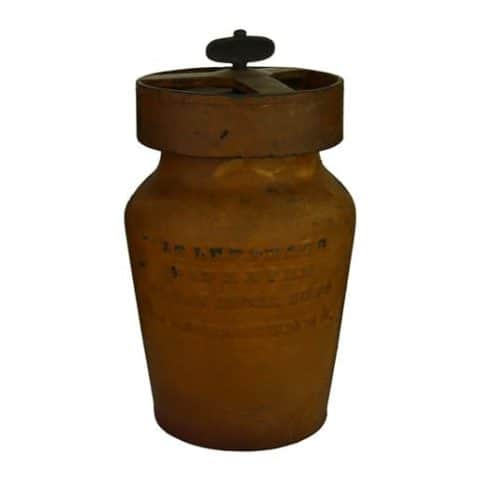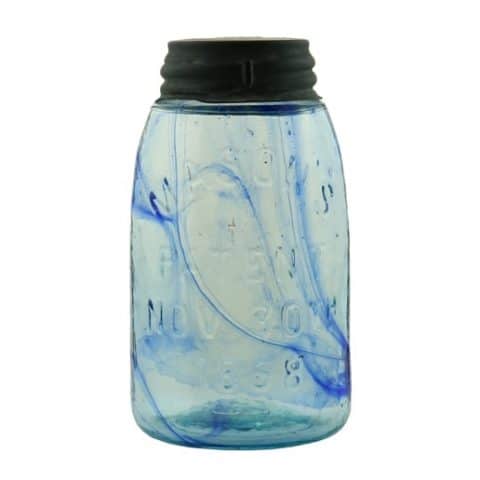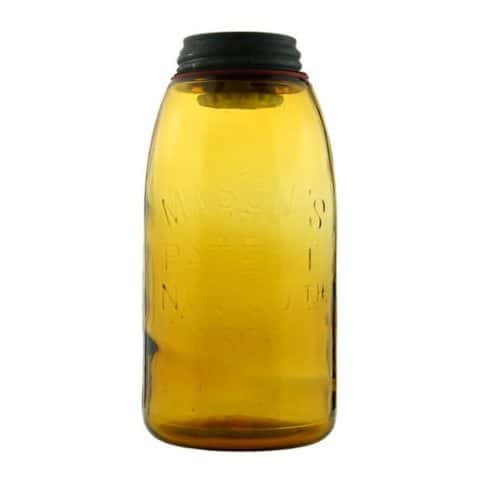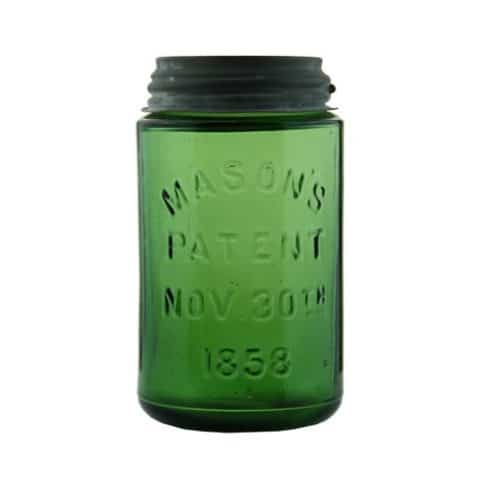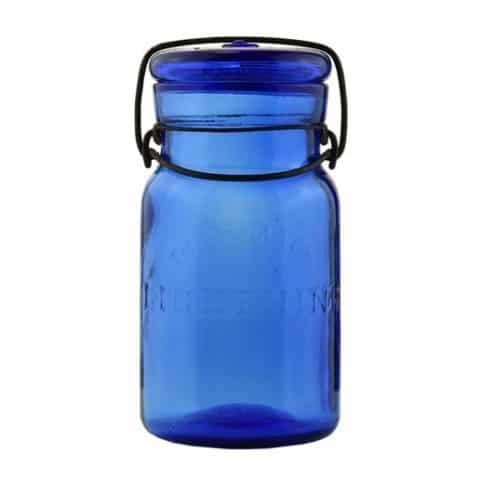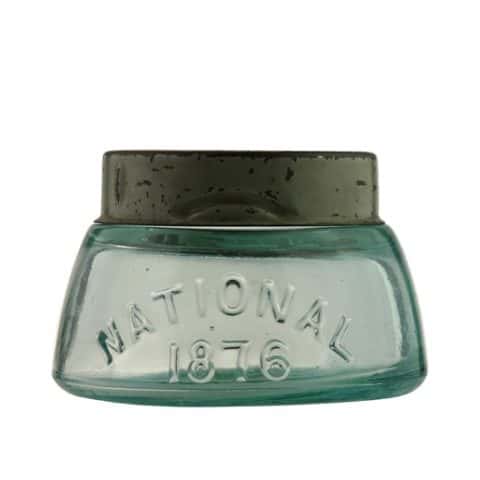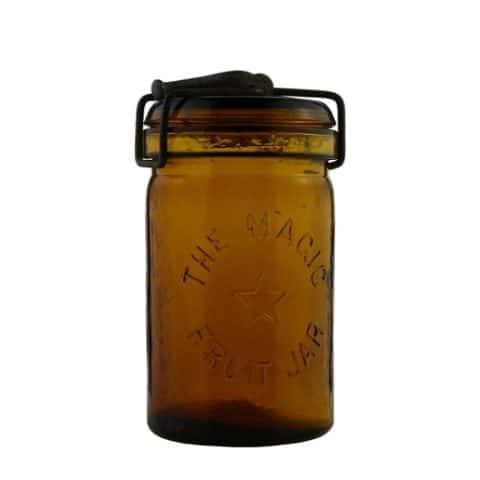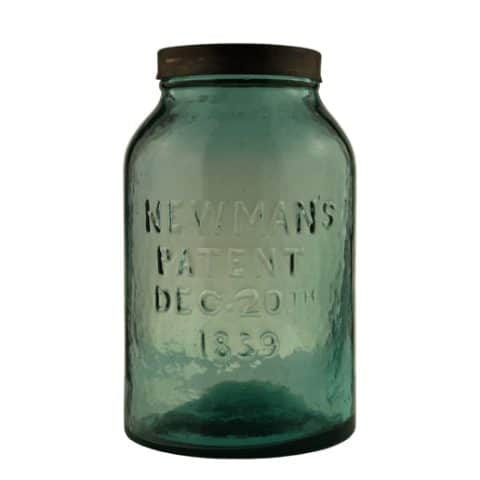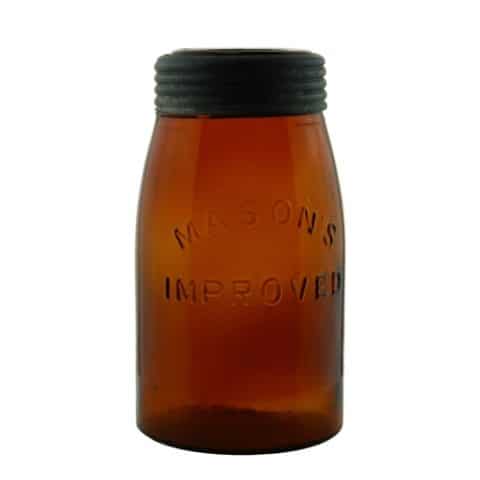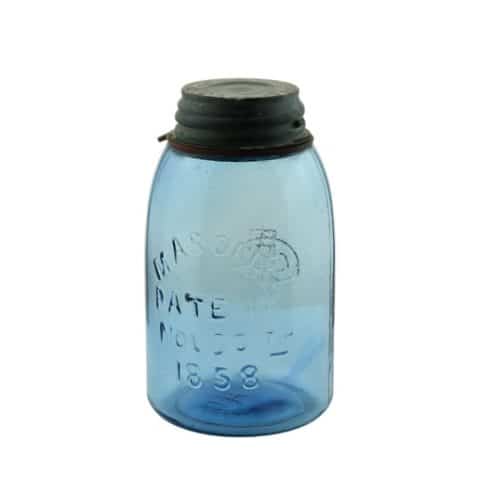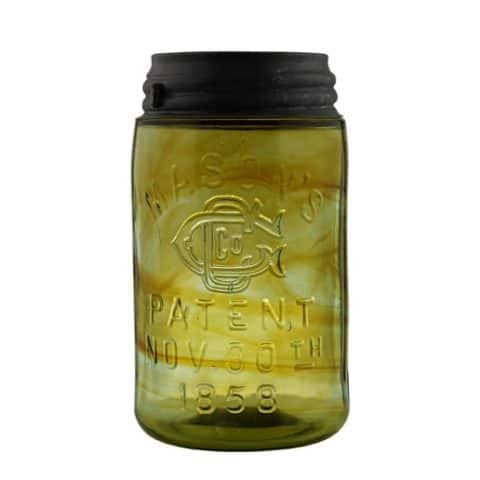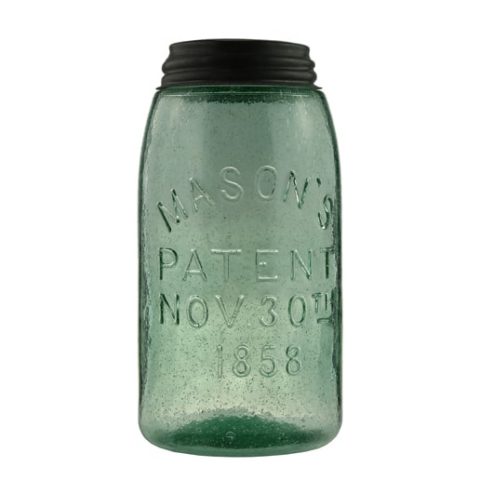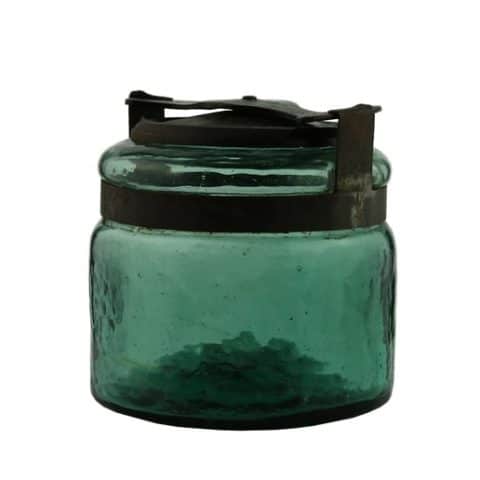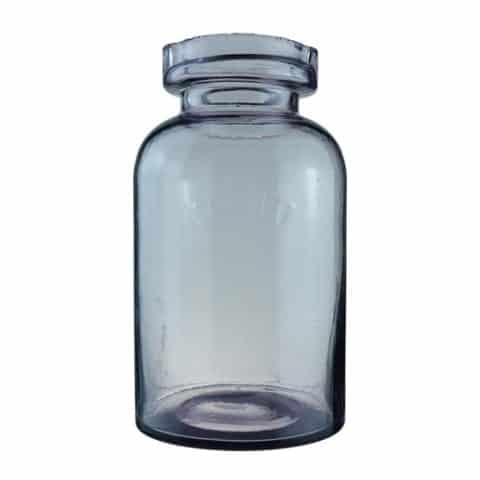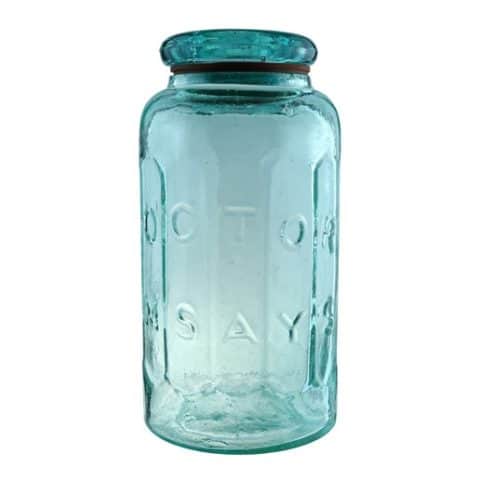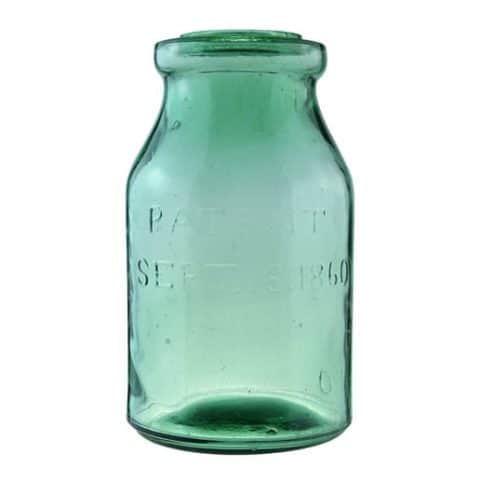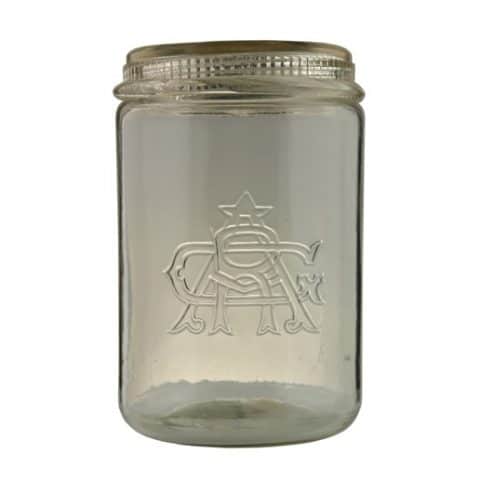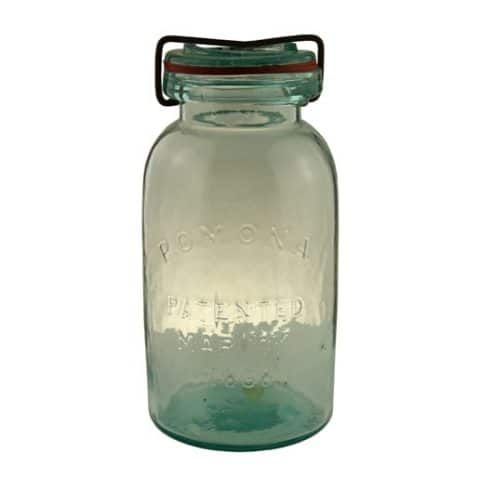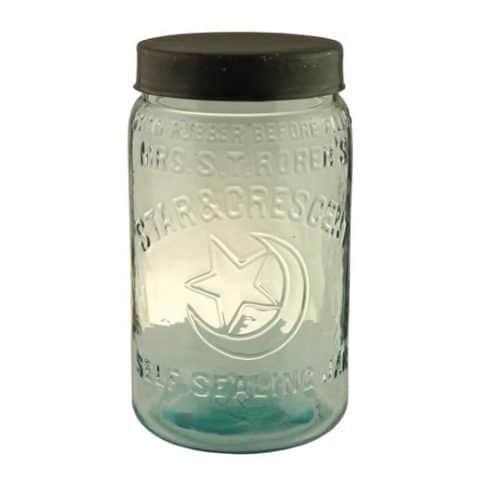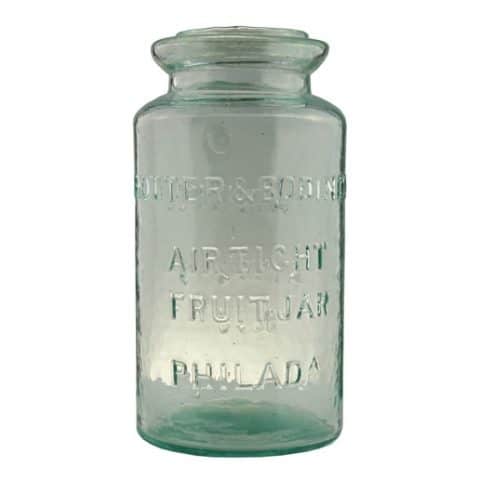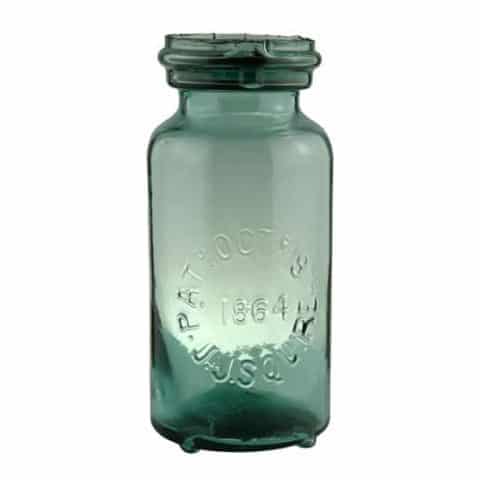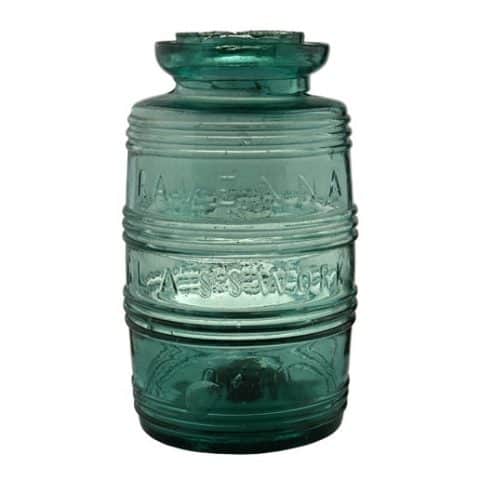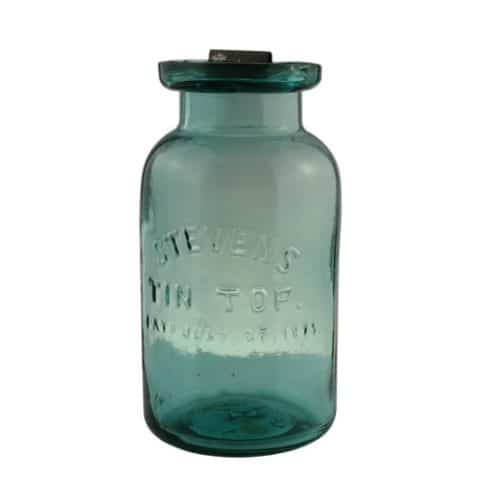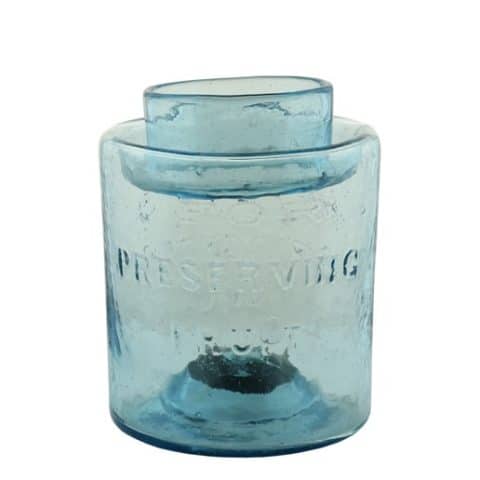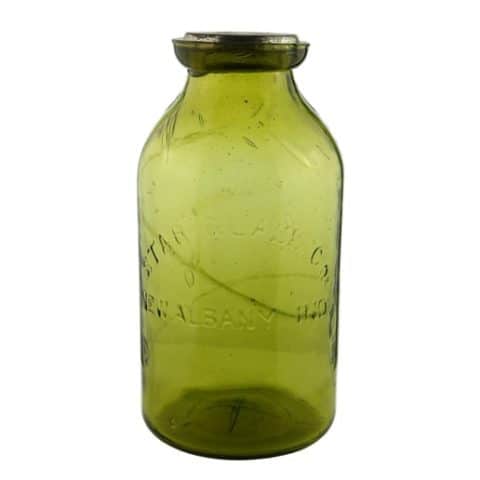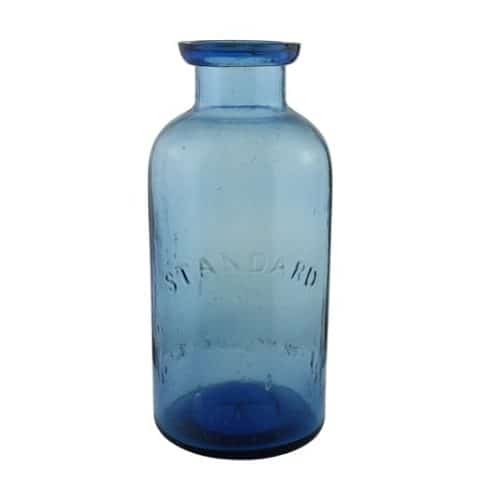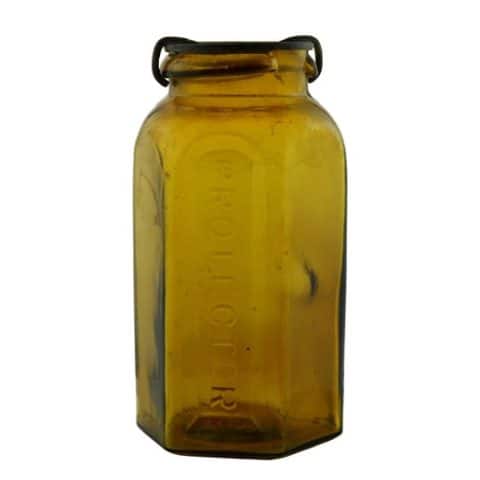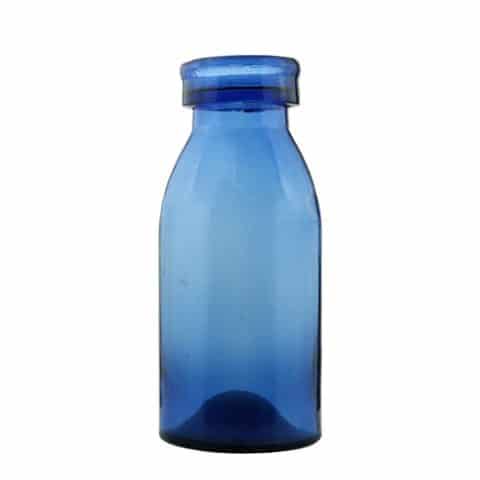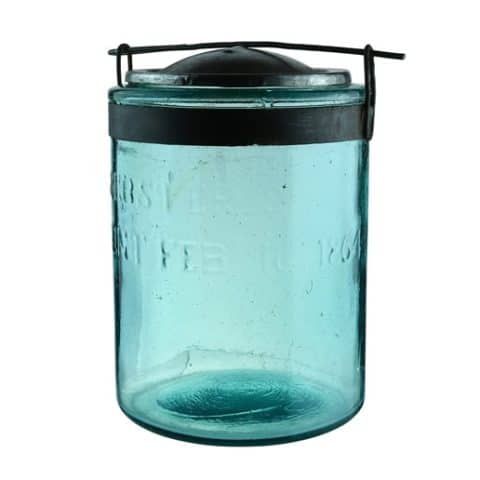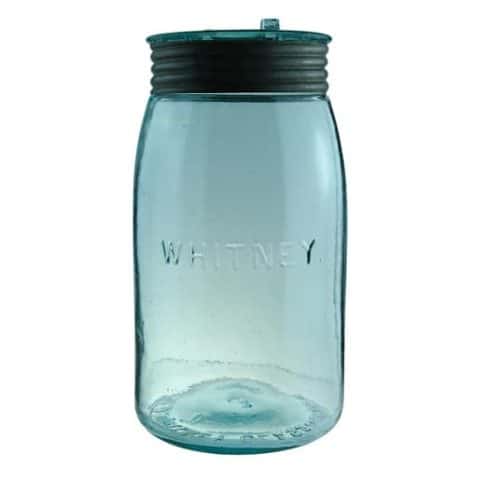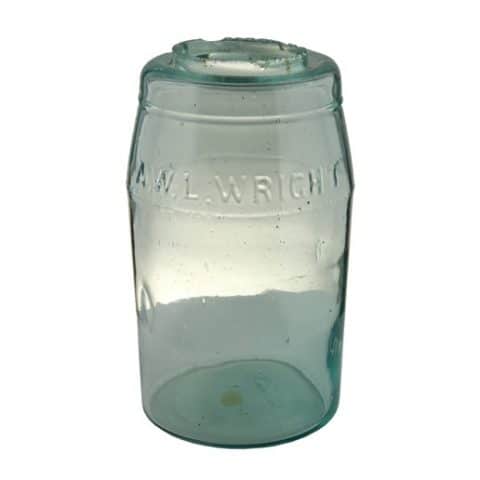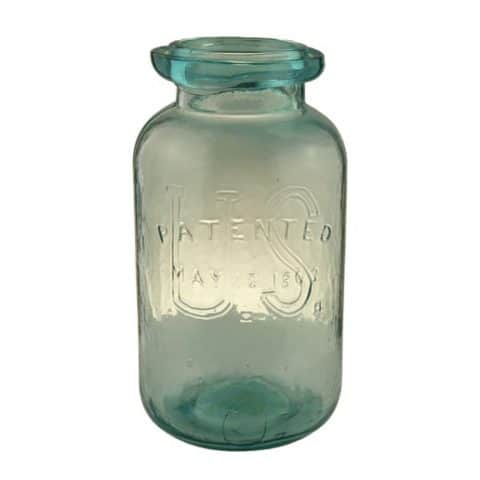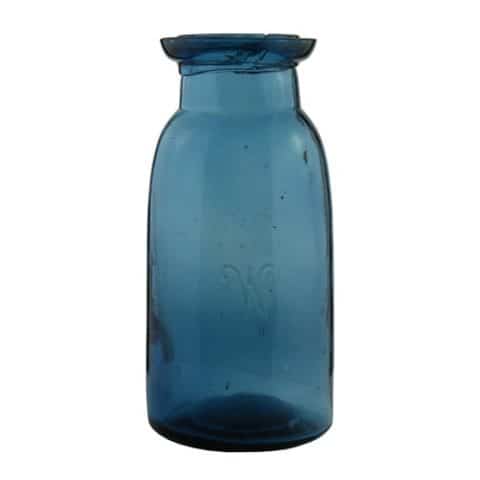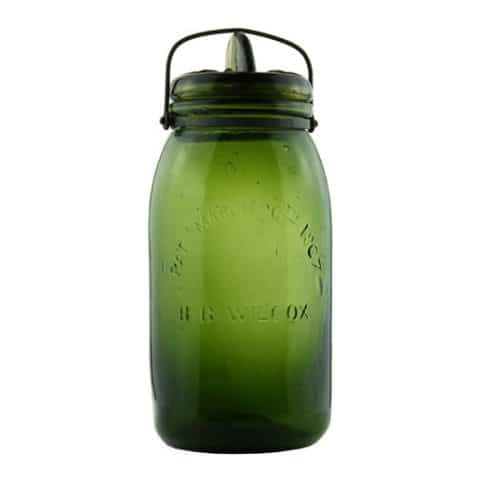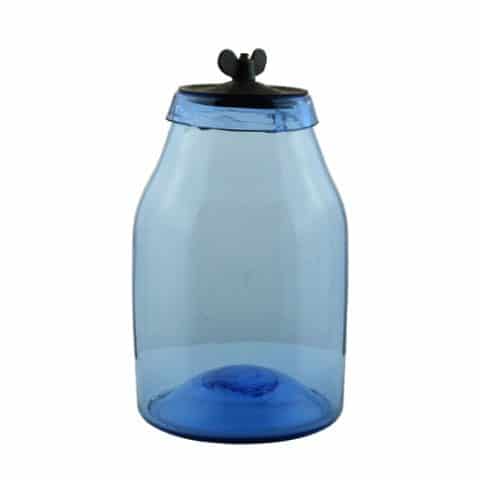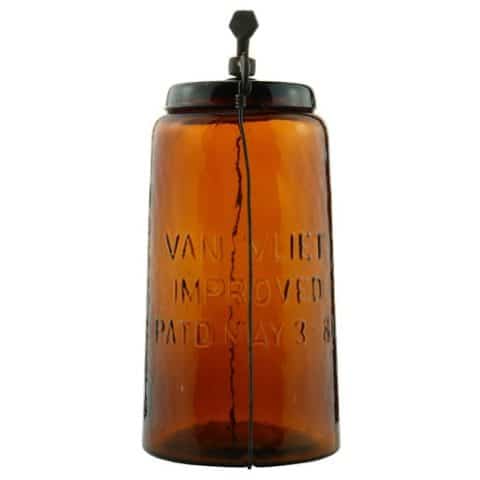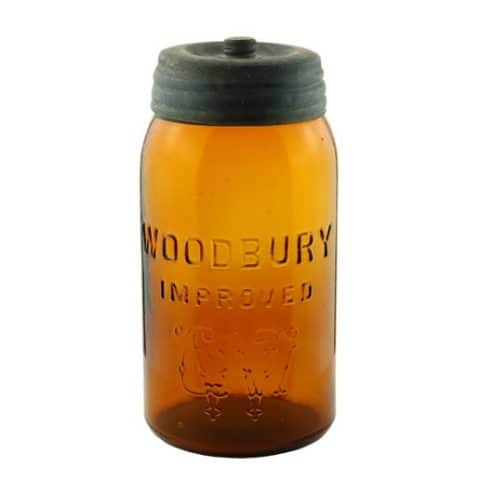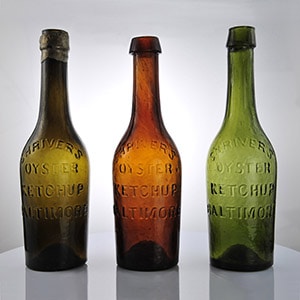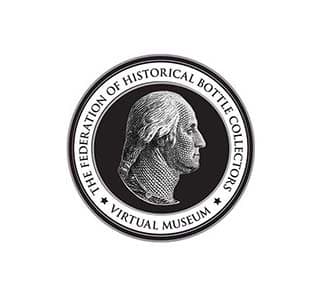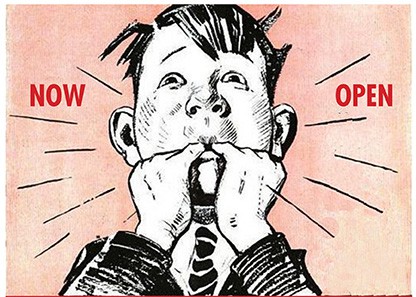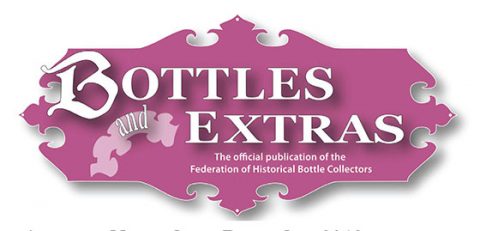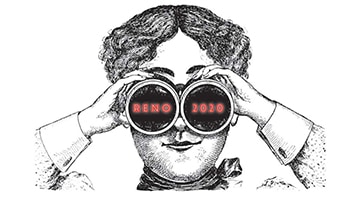Wilson & Webb Patent March 24th 1903
The Wilson & Webb Patent
March. 24th 1903
Allen F. Wilson & John Wesley Webb, Clayton, New Jersey
Moore Brothers Glass Company Clayton Glass Works, Clayton, N.J.
Aquamarine Quart
Provenance: Jerry McCann Collection
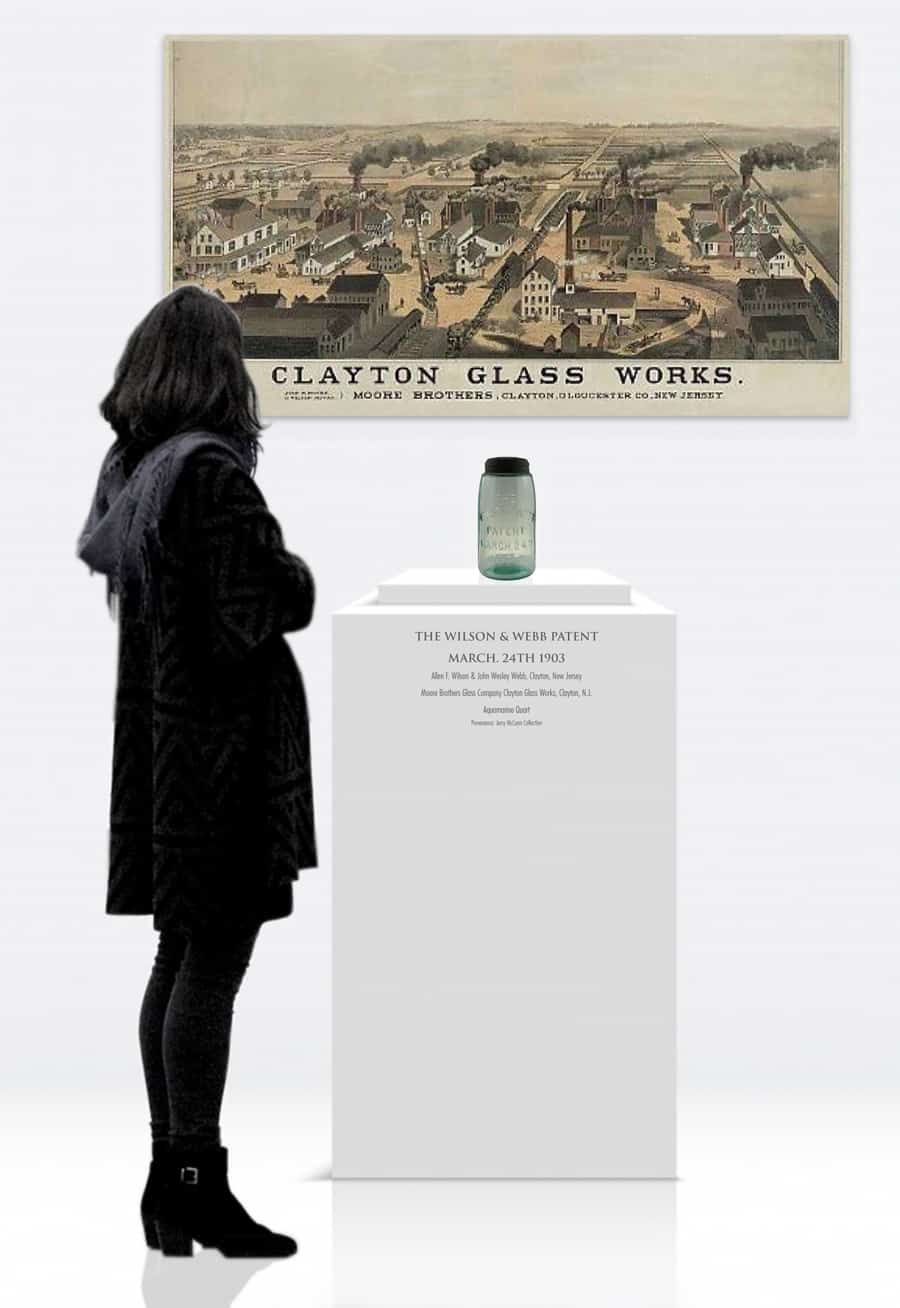
Our example of a Wilson & Webb Patent jar was made at the Moore Brothers Glass Company at the Clayton Glass Works, both located in Clayton, New Jersey. The aquamarine quart jar is embossed very cleanly in a condensed sans-serif typestyle that reads, ‘THE’ (1st line) ‘WILSON & WEBB’ (2nd line concave arch), ‘PATENT’ (3rd line), ‘MARCH. 24th’ (4th line) and ‘1903’ (5th line).
The jar is hand-blown with a ground lip and has an unmarked base. The closure is a shoulder seal with a tinned iron or zinc cap with three indentations pressed into the side to engage three lugs on the neck of the jar. The cap is fluted and has a daisy-like pattern around stamped copy reading ‘WILSON & WEBB PAT 24th 1903 CLAYTON, N J.’ The jar is considered extremely rare.
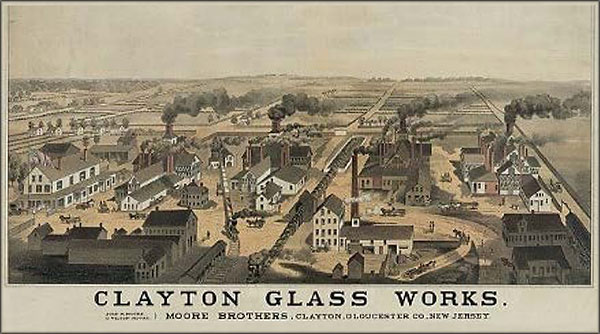

The jar patentee was Allen F. Wilson of Clayton, New Jersey. Half of the patent associated with this jar was assigned to John W. Webb, also from Clayton. Wilson and Webb had other related patents such as Patent No. 692,957 titled Implement for Finishing Necks and Lips of Bottles. Allen F. Wilson, Clayton, N.J. assignor of one-half to John Wesley Webb, Clayton, N.J. Filed Oct. 1, 1901. Another was the A. F. Wilson Patent No. 699,606 for Neck and Cover for Closing Bottles or Jars, Patented May 6, 1902. Both are pictured below.
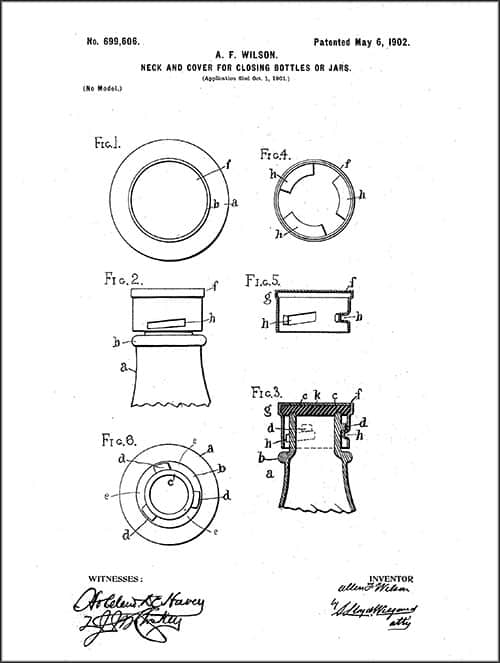

Two thousand sample jars were made in 1903 at the Moore Brothers plant in Clayton, New Jersey where Allen F. Wilson was a foreman of the pattern department.
When John M. Moore acquired the Fislerville Glass Works in 1856, he set up a successful business that would last for more than half a century. The firm went through six reorganizations and continued through the renaming of the town from Fislerville to Clayton in 1867. In October 1863, the glassworks in Fislerville became Moore Brothers & Co. also known as the Clayton Glass Works. When the glass industry moved to machine production in the early 20th century, the Moore family closed the plant in 1912.
Support: Reference to Fruit Jar Annual 2020 – The Guide to Collecting Fruit Jars by Jerome J. McCann
Support: Reference to Red Book #11, the Collector’s Guide to Old Fruit Jars by Douglas M. Leybourne, Jr.
Support: Reference to The Moore Family Glass Houses of New Jersey by Bill Lockhart, Beau Schriever, Bill Lindsey, and Carol Serr
Primary Image: The Wilson & Webb Patent jar imaged on location by Alan DeMaison, FOHBC Virtual Museum Midwest Studio
Support Images: Auction Lot 1044: WILSON & WEBB PATENT, Aqua Quart, A rare aqua quart-size example with good strong embossing. The mouth finish is made for a tin cap with 3 lugs. Comes with only an old zinc cap but it does tighten on the jar. Good ground rim with very little flaking. The body of the jar has a few usage scuffs. Base: “2”. This item is from the Philip Robinson museum collection. – Greg Spurgeon, North American Glass
Support Images: Auction Lot 6673: THE WILSON and WEBB PATENT MARCH 24th 1903, Aquamarine, Closure: Original lid missing as normal, comes with a zinc cap that tightens. Appearance: Sparkling glass. Condition: Normal flaking of the ground mouth. Embossing: Strong and sharp. Base: unmarked. Age: c1903. Availability: Rare – Greg Spurgeon, North American Glass
Support Image: THE WILSON and WEBB PATENT MARCH 24th 1903, with original rayed lid. – Jeff Vanaman collection.
Support Image: Noon hour. Moore Bros. Glass Co., Clayton, N.J. All are workers. 1909, Photo by Lewis W. Hine – Library of Congress
Join the FOHBC: The Virtual Museum is a project of the Federation of Historical Bottle Collectors (FOHBC). To become a member.


